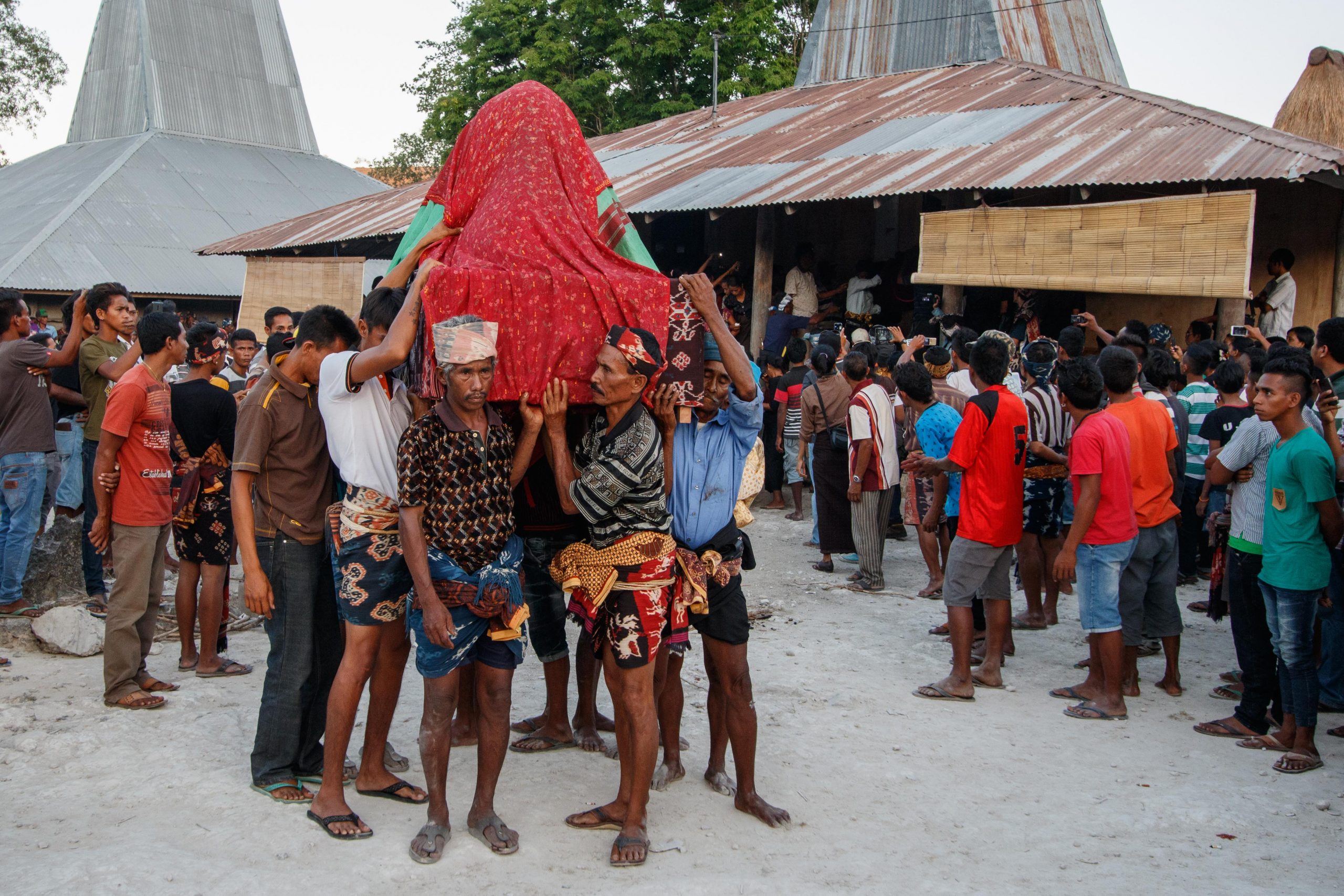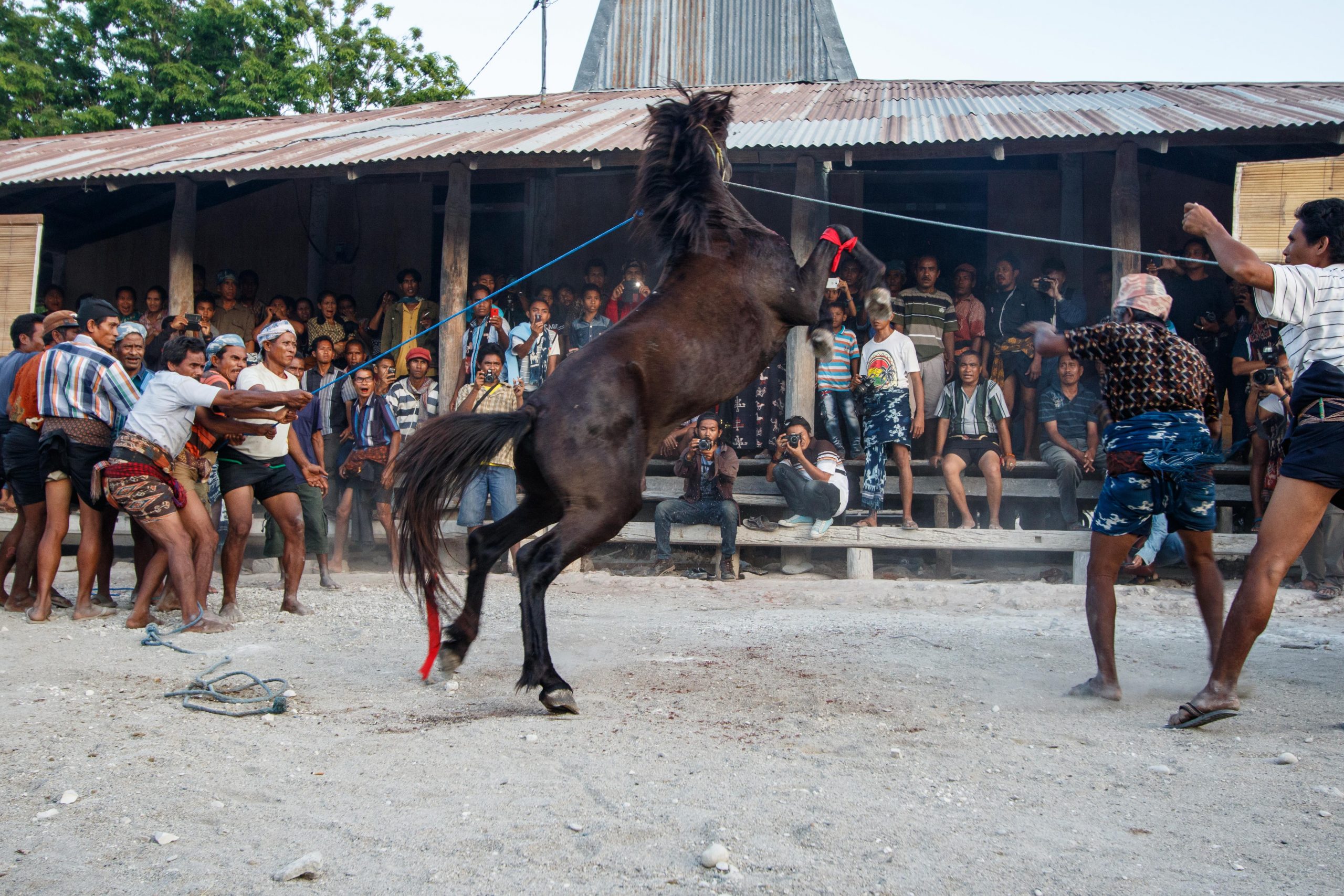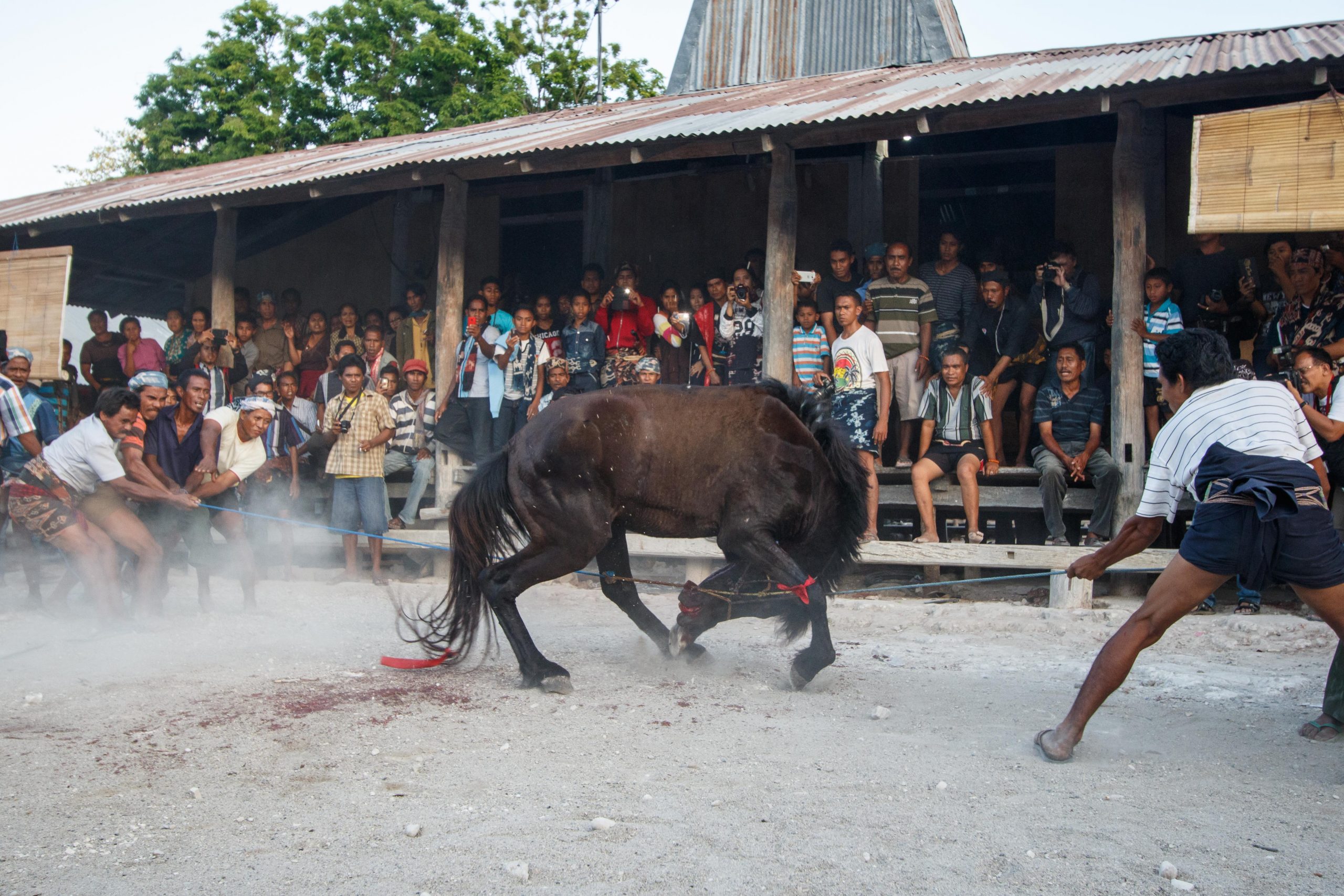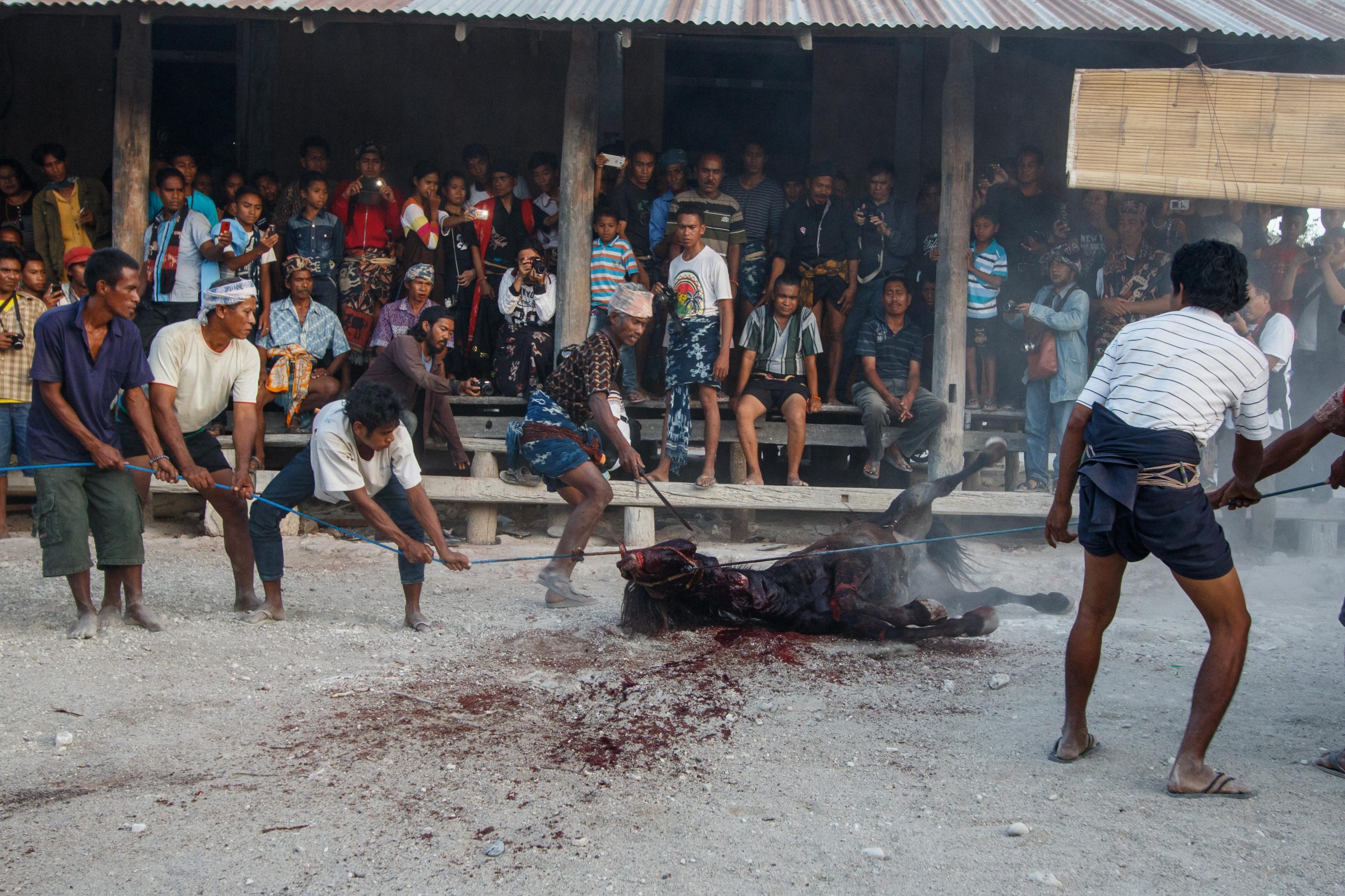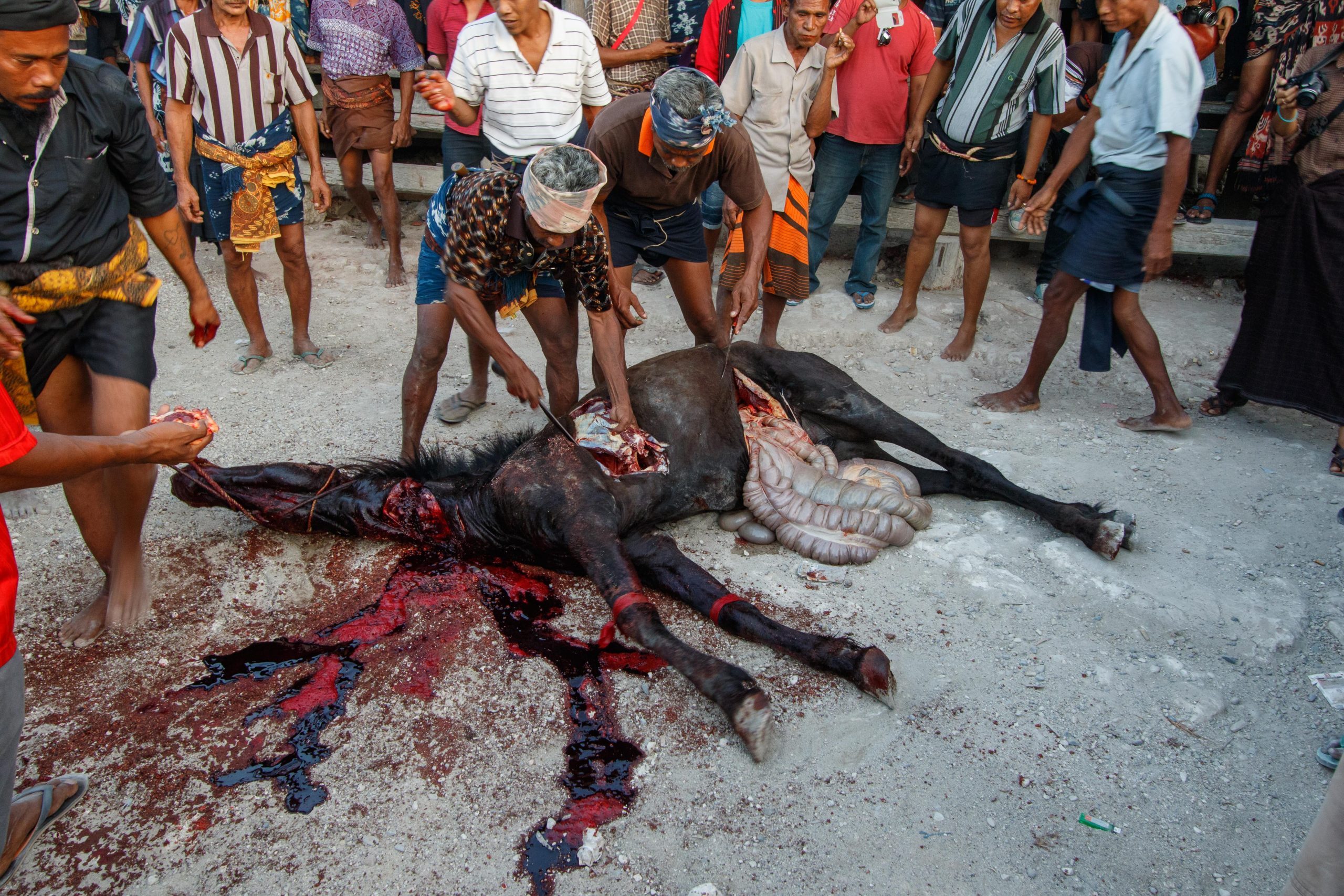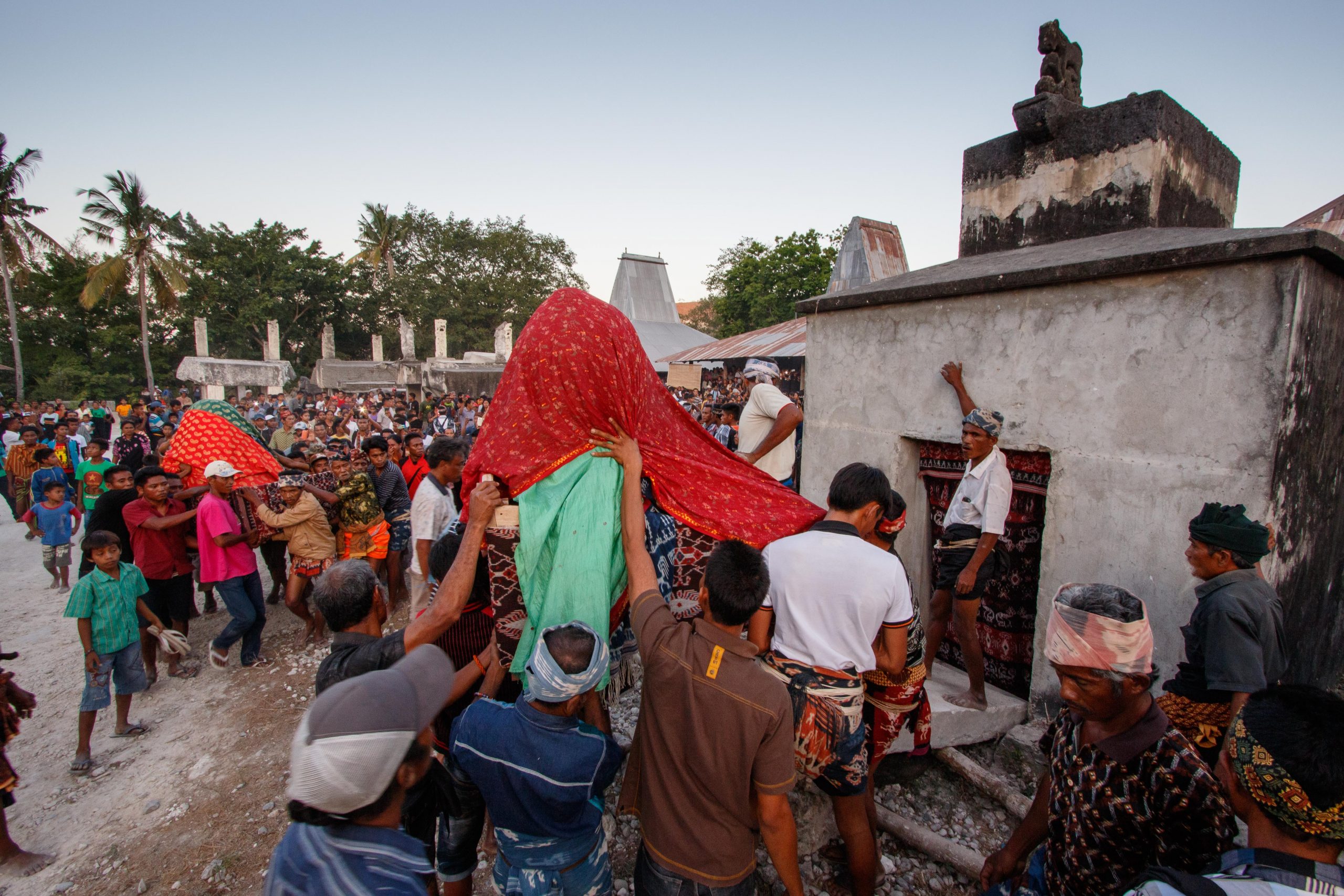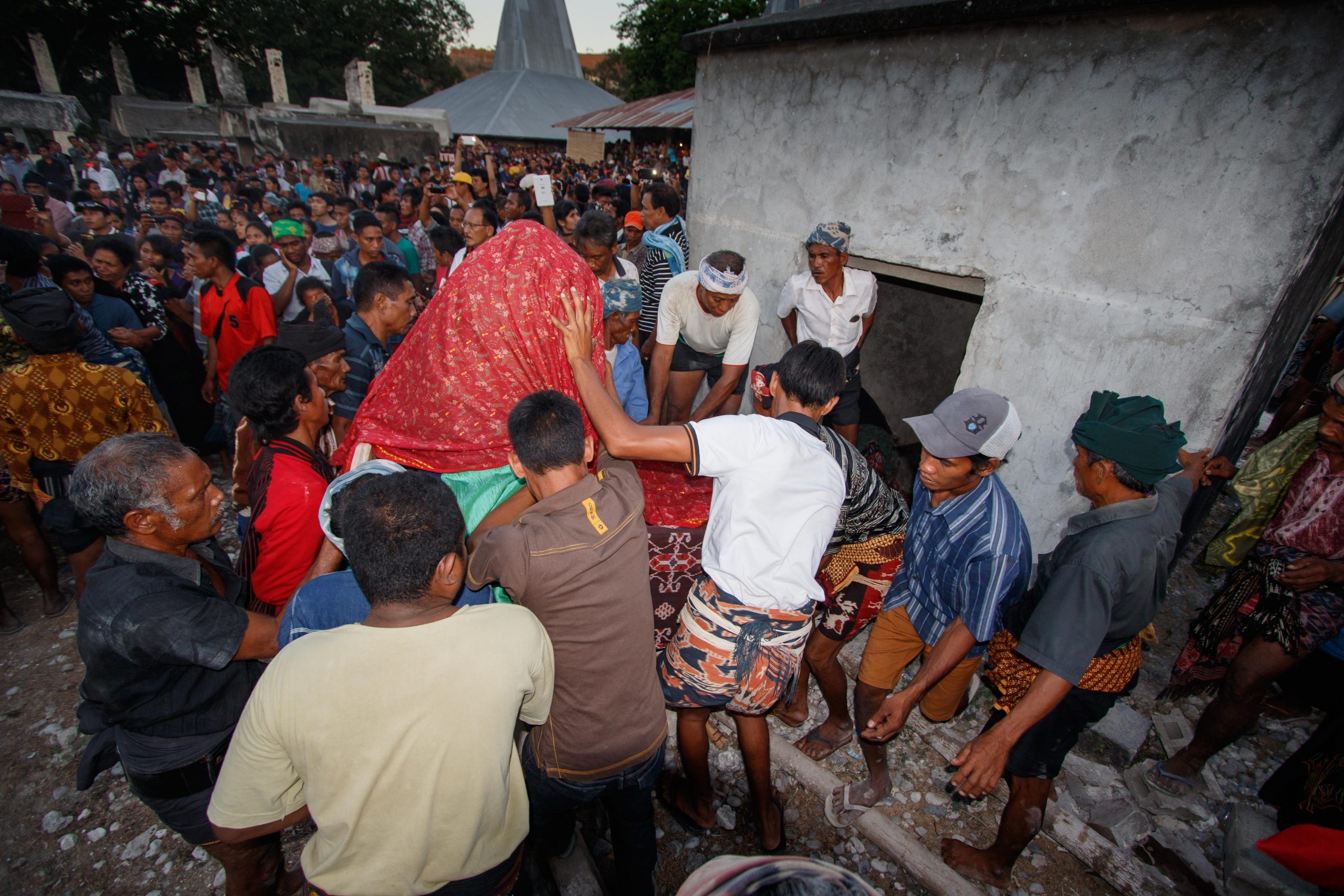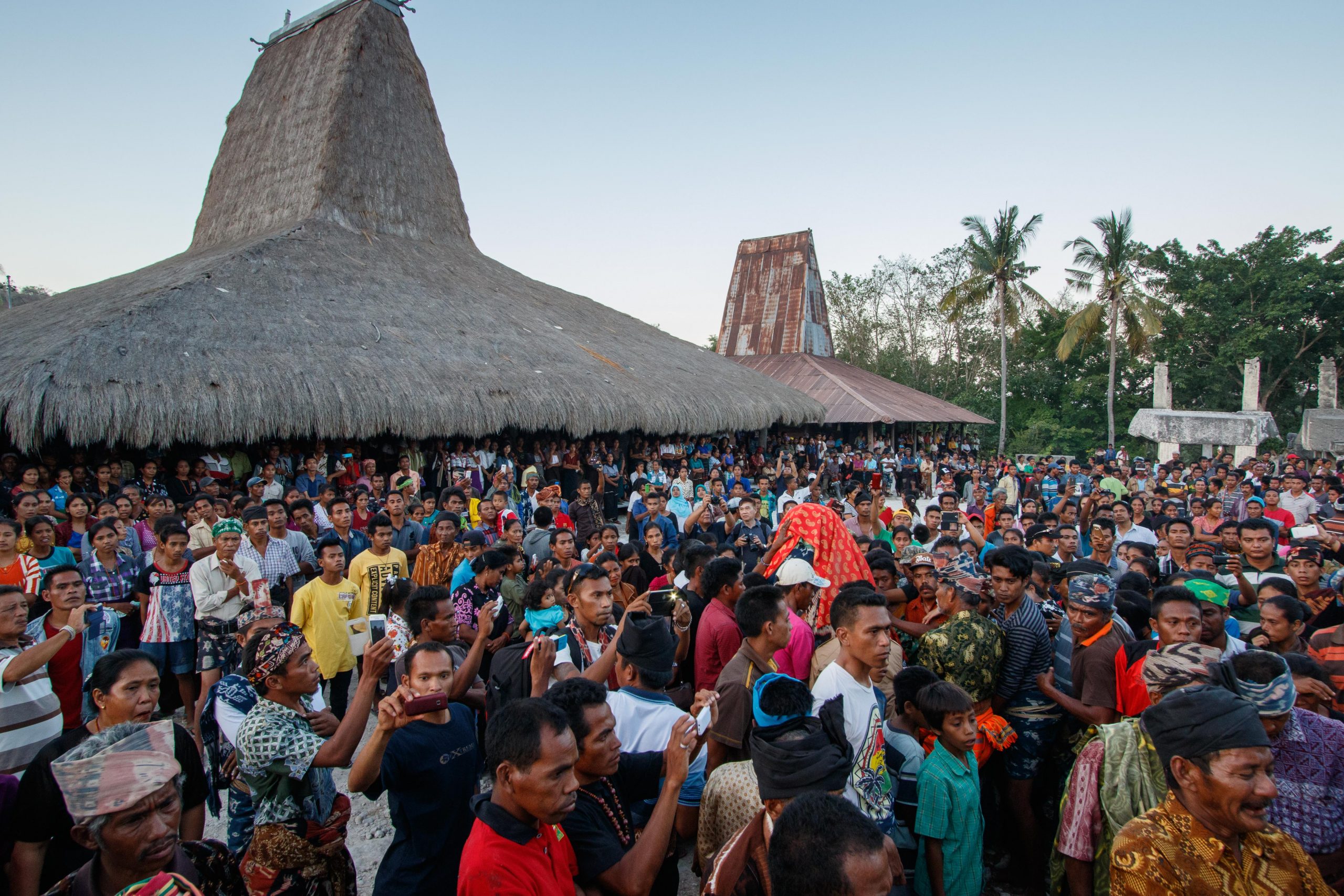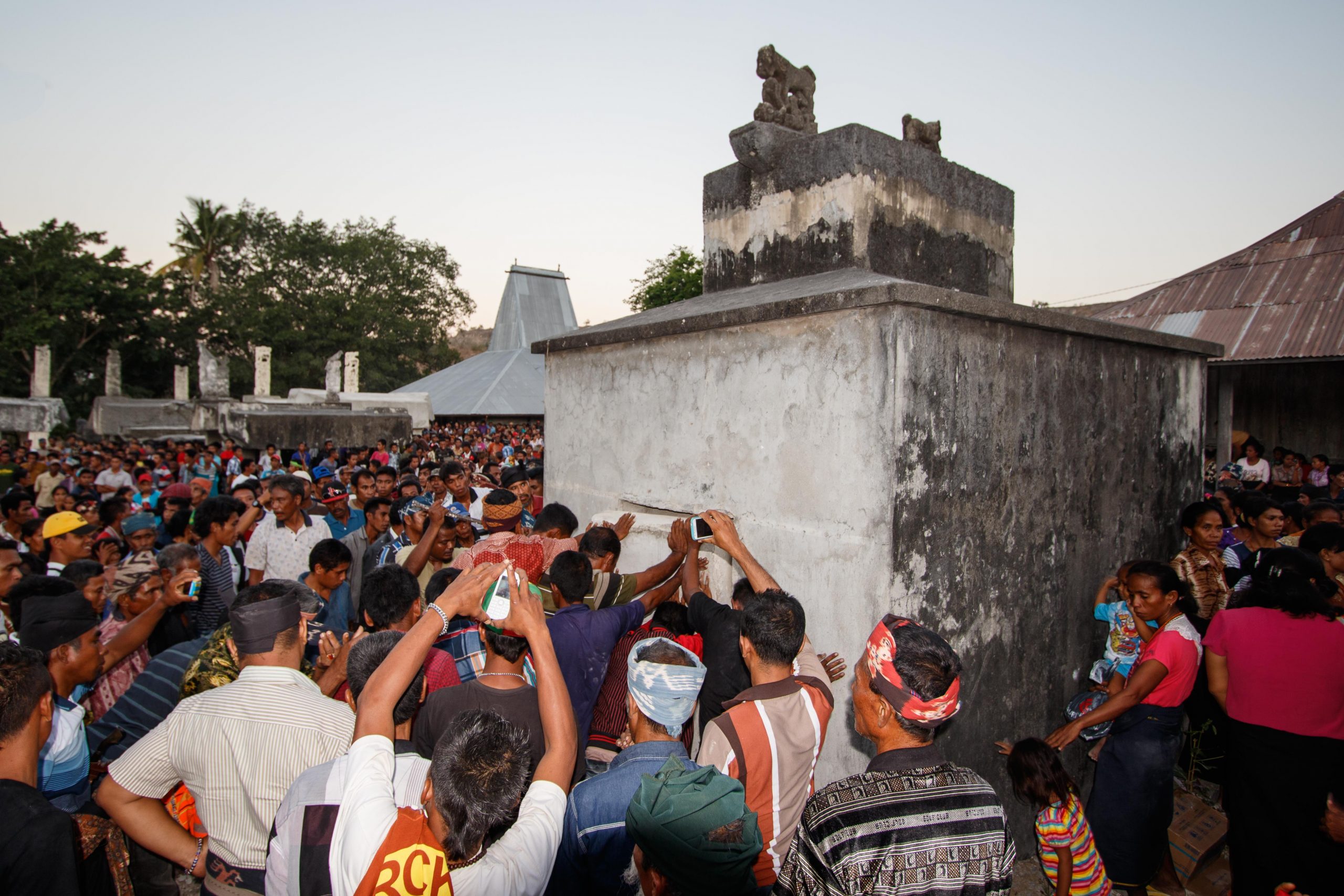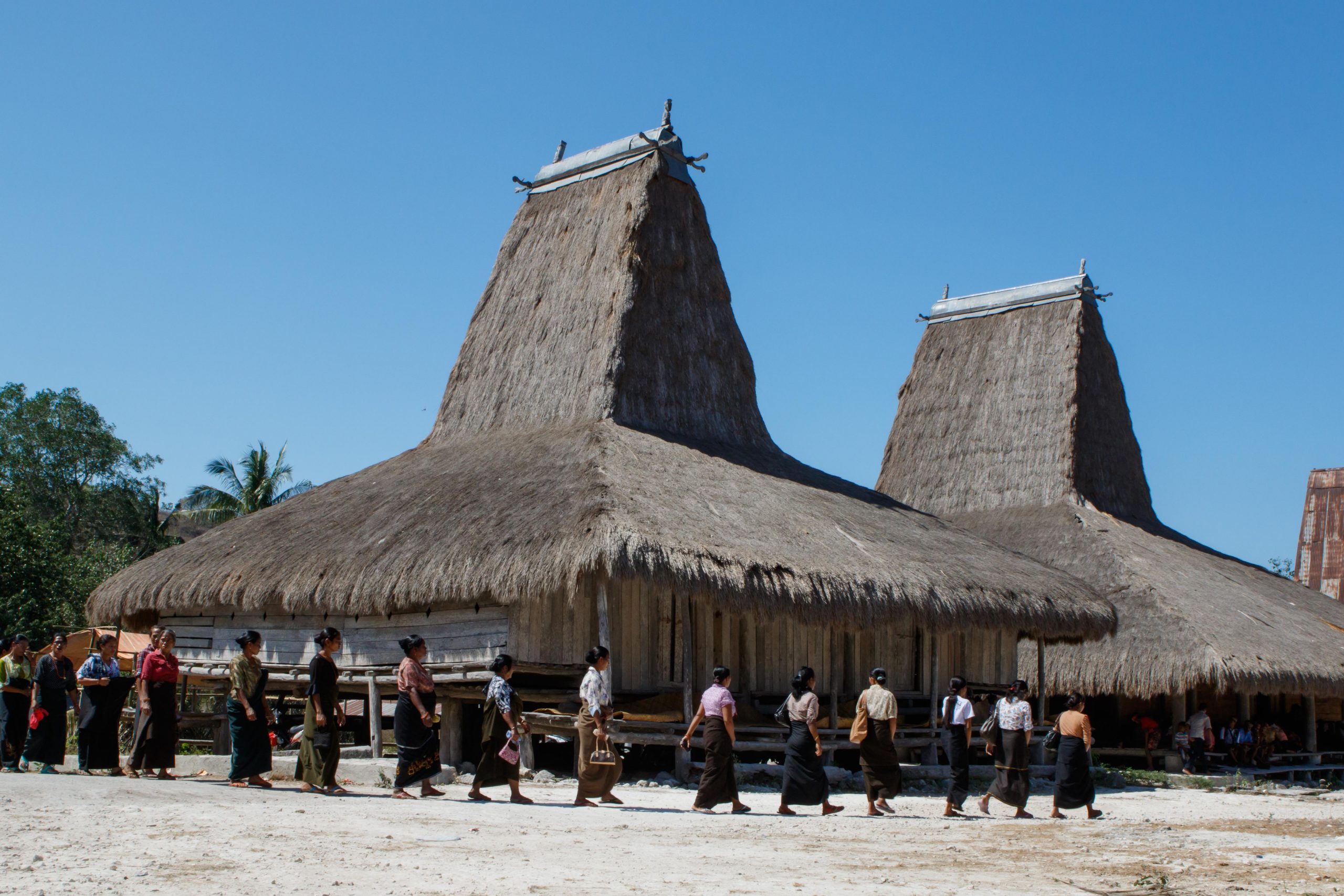
In October 2015 I was fortunate and very privileged to be able to attend a royal funeral in the traditional East Sumba village of Praiyawang, 70 kilometer east of Waingapu, Sumba’s largest city.
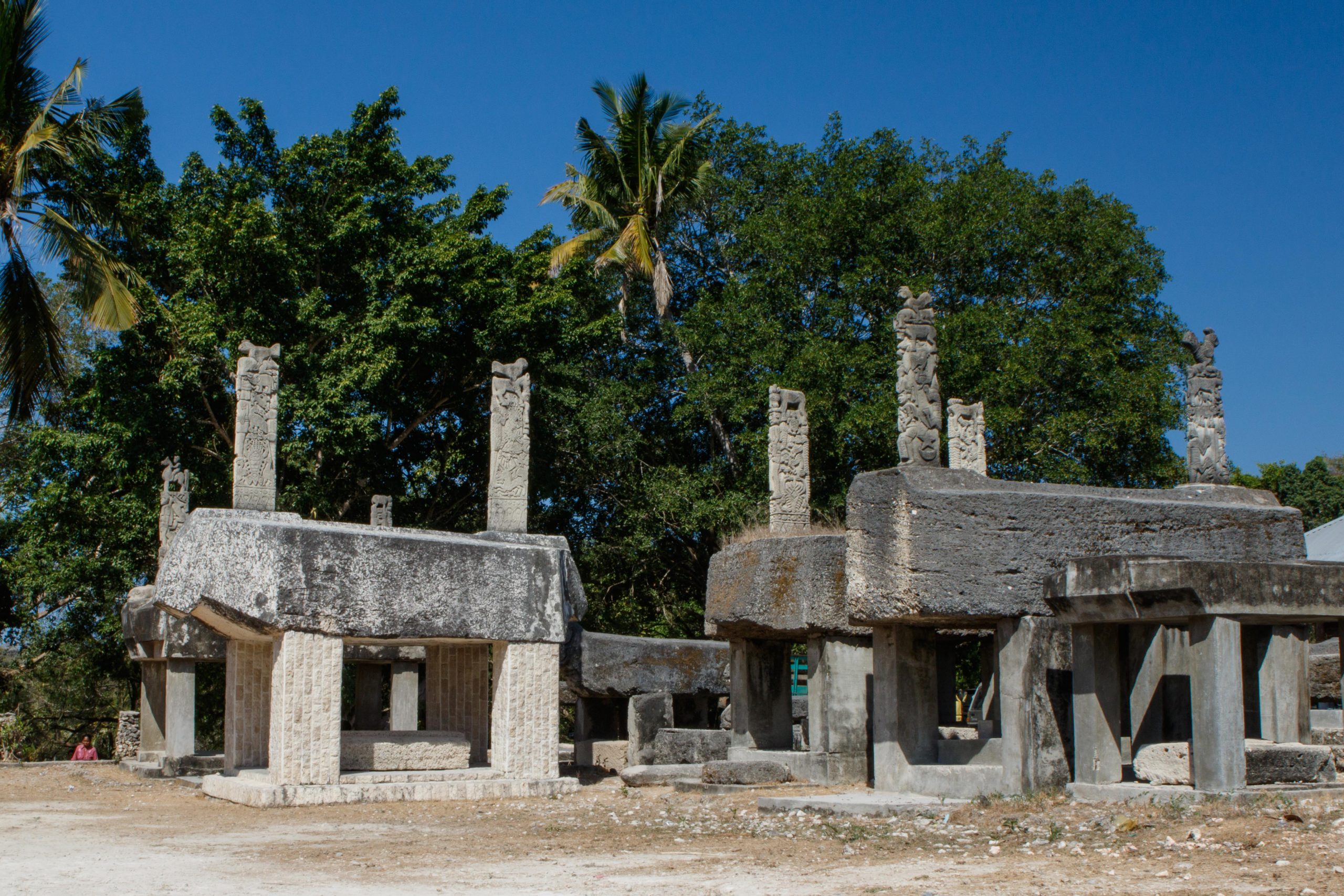
The island of Sumba, in eastern Indonesia, is one of a few places in the world where megalithic burials are still relative common practice. Burial in megaliths used to be practiced in many parts of the world during the Neolithic and Bronze Ages. In Sumba the megalithic culture originated about 4,500 years ago and this tradition is still alive today.
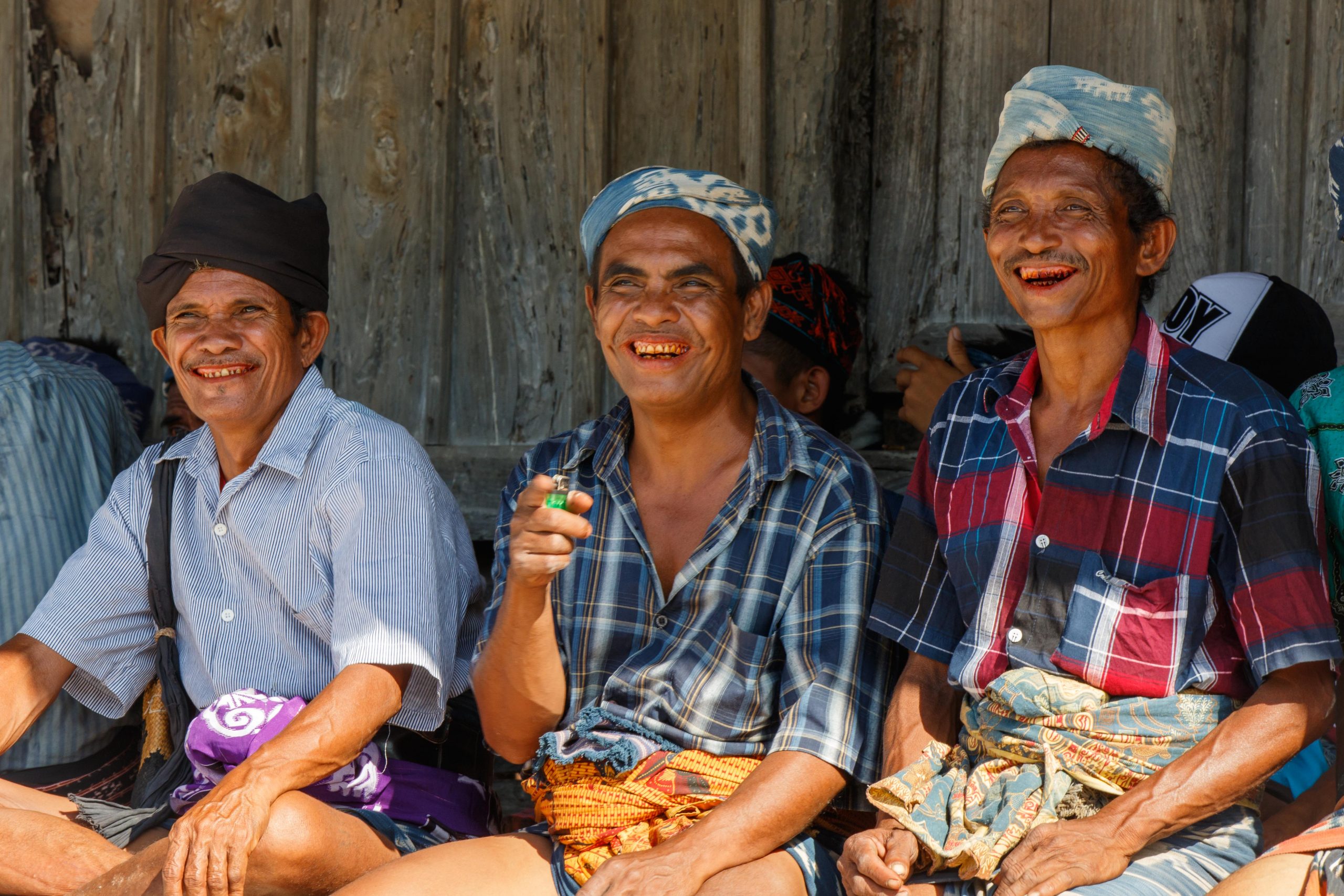
Sumba used to have a social system consisting of nobles, peasants, and slaves (Maramba, Kabthu and Ata). Although today this system is no longer functional, it continues to exist by name and Sumba still has a highly stratified society based on castes, especially in East Sumba. Families who came from nobility still tend to be rich and those who do well still keep their titles.
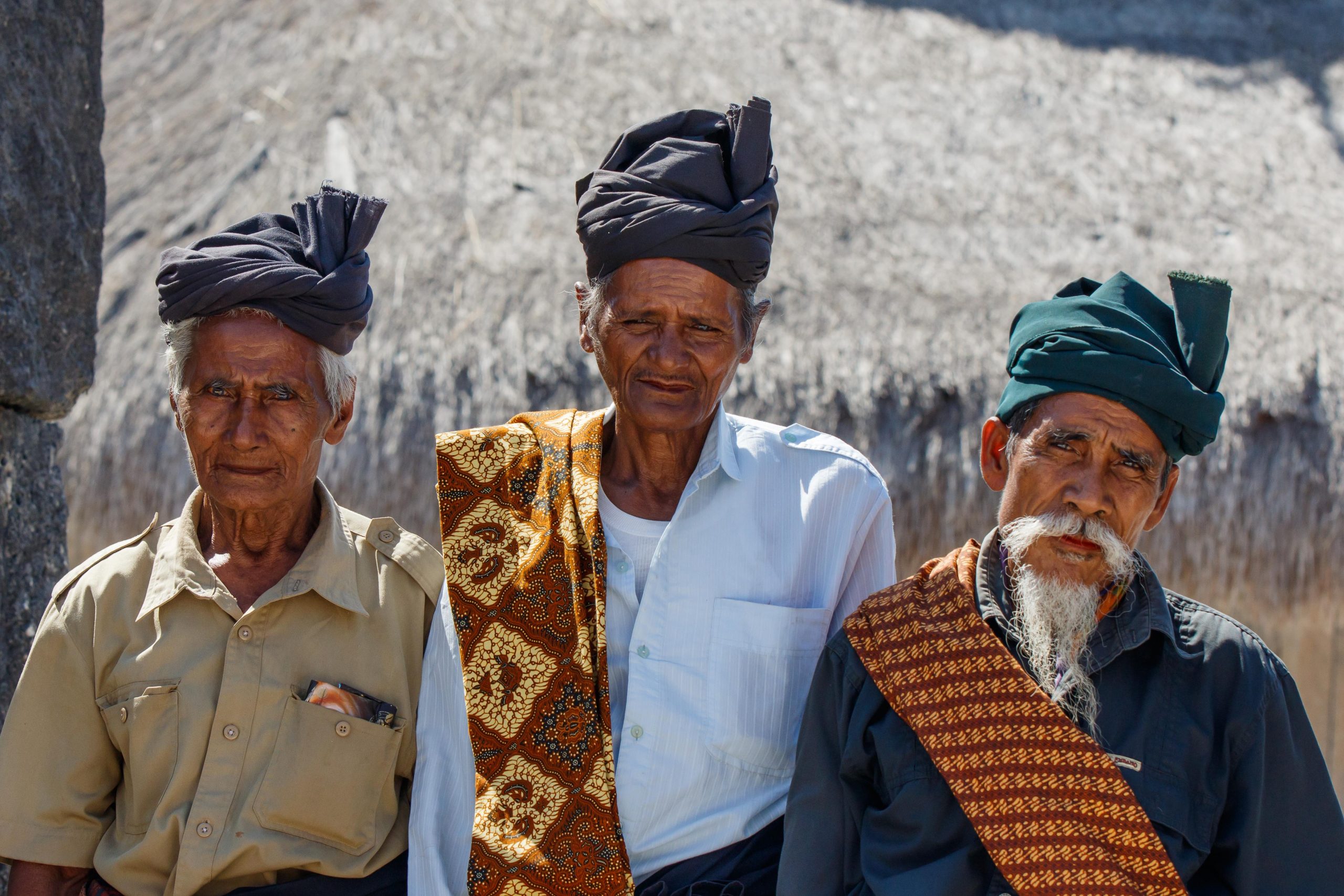
The Sumbanese traditionally build their houses and villages on hills or mountains, as to be protected from enemies and to be closer to the spirits and ancestors. Traditionally they surround their villages with a stone wall with 2 gates: an entrance and exit. In the middle of the village is a yard with tombs and sacrificial altars (Kateda). The houses with their mostly high, pointed Marapu roofs form a circle around this yard or are arranged in 2 parallel rows.
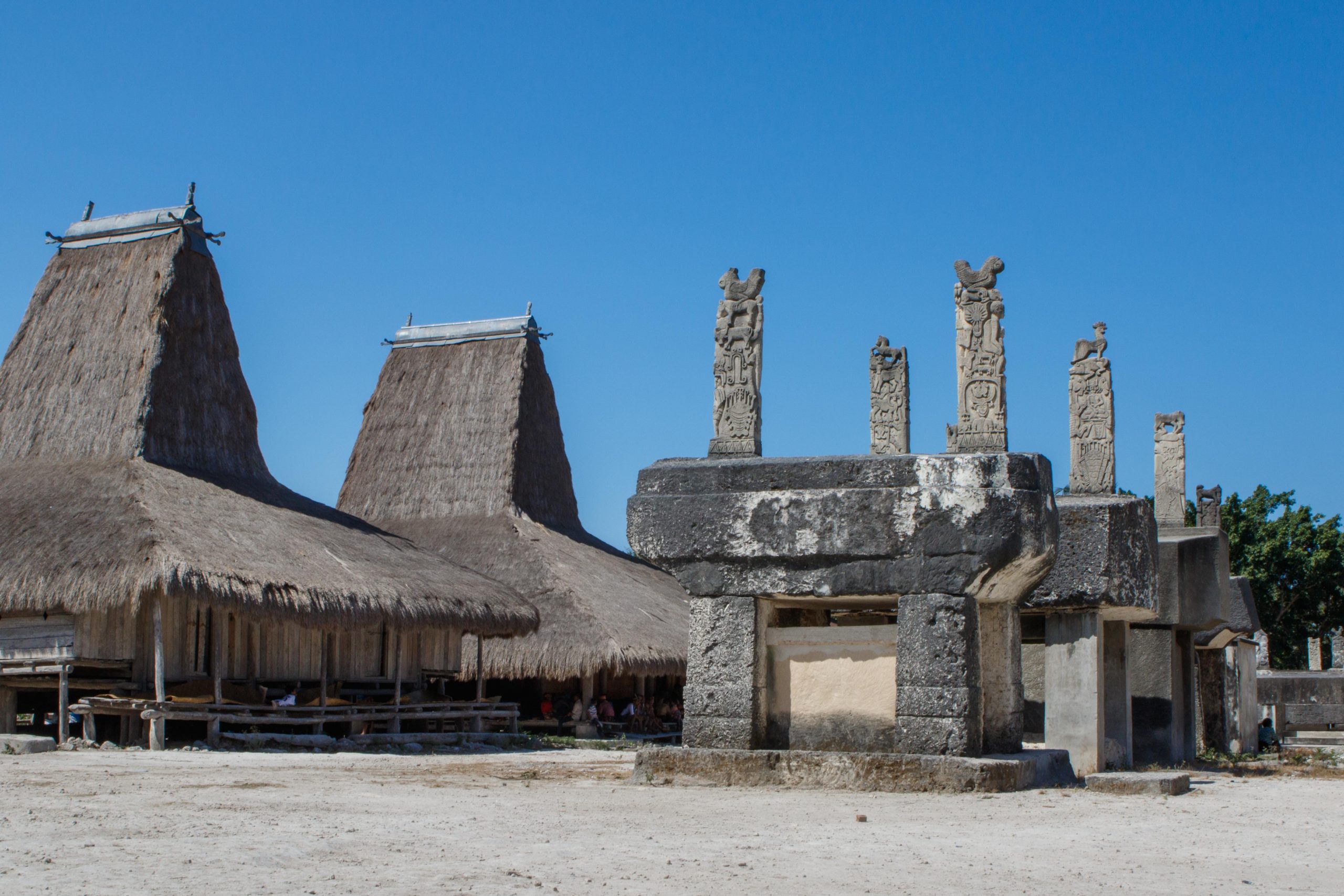
A megalithic tomb consists of a large rectangular stone plate over the actual grave, looking similar to an altar. They are either closed, with a grave chamber direct under the plate, or open, with smaller chambers in the ground, each with an individual cover plate. Older grave chambers were carved out of a single large piece of limestone, with a matching cover plate. The different designs and dimensions of individual graves are in accordance with the importance of the family. The material of the cover plates is until today still mostly limestone, weighing often many tons. Grave stones are usually decorated with scenes and sculptures from the life of the deceased and his life after death according to Marapu, the traditional faith of the Sumbanese.
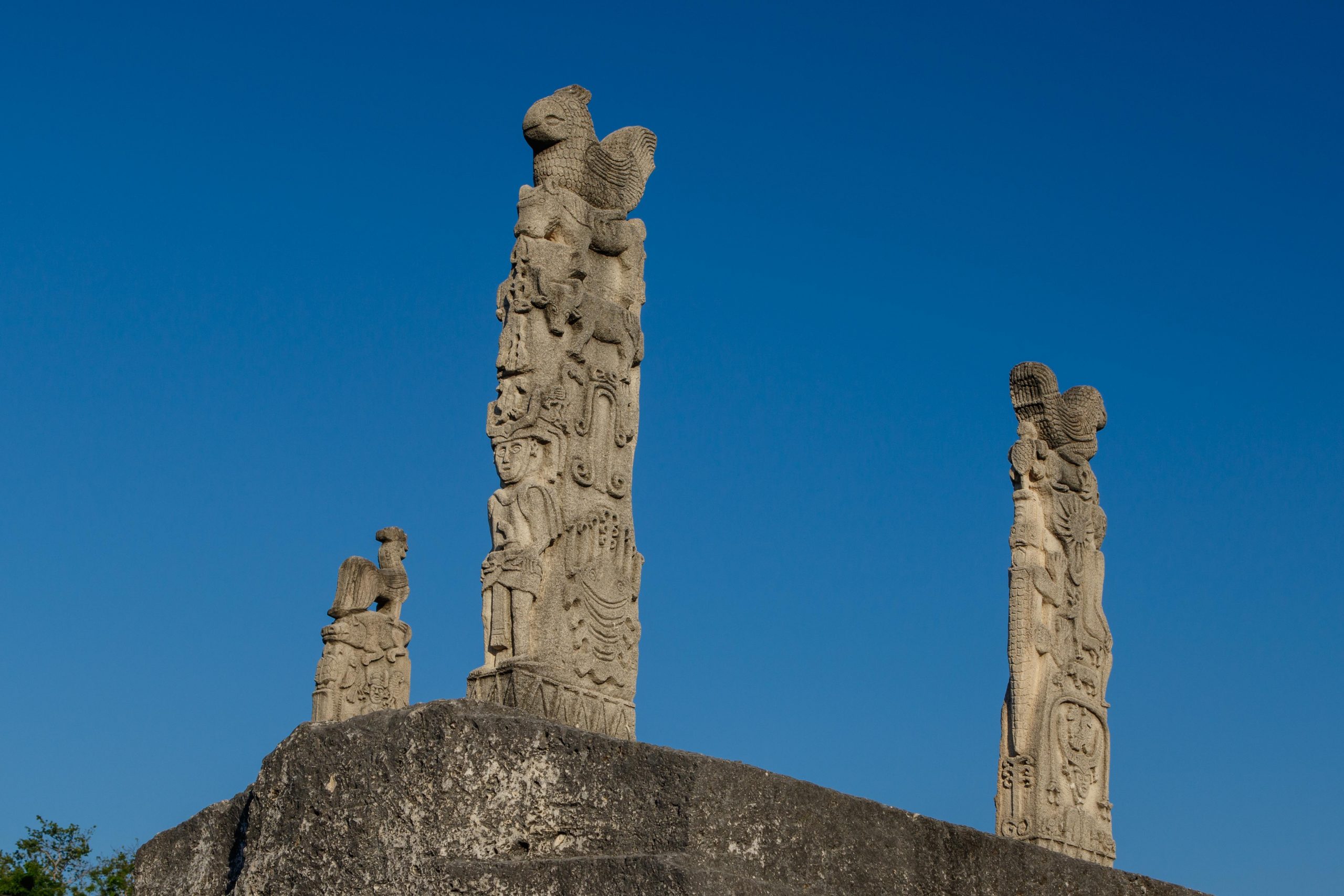
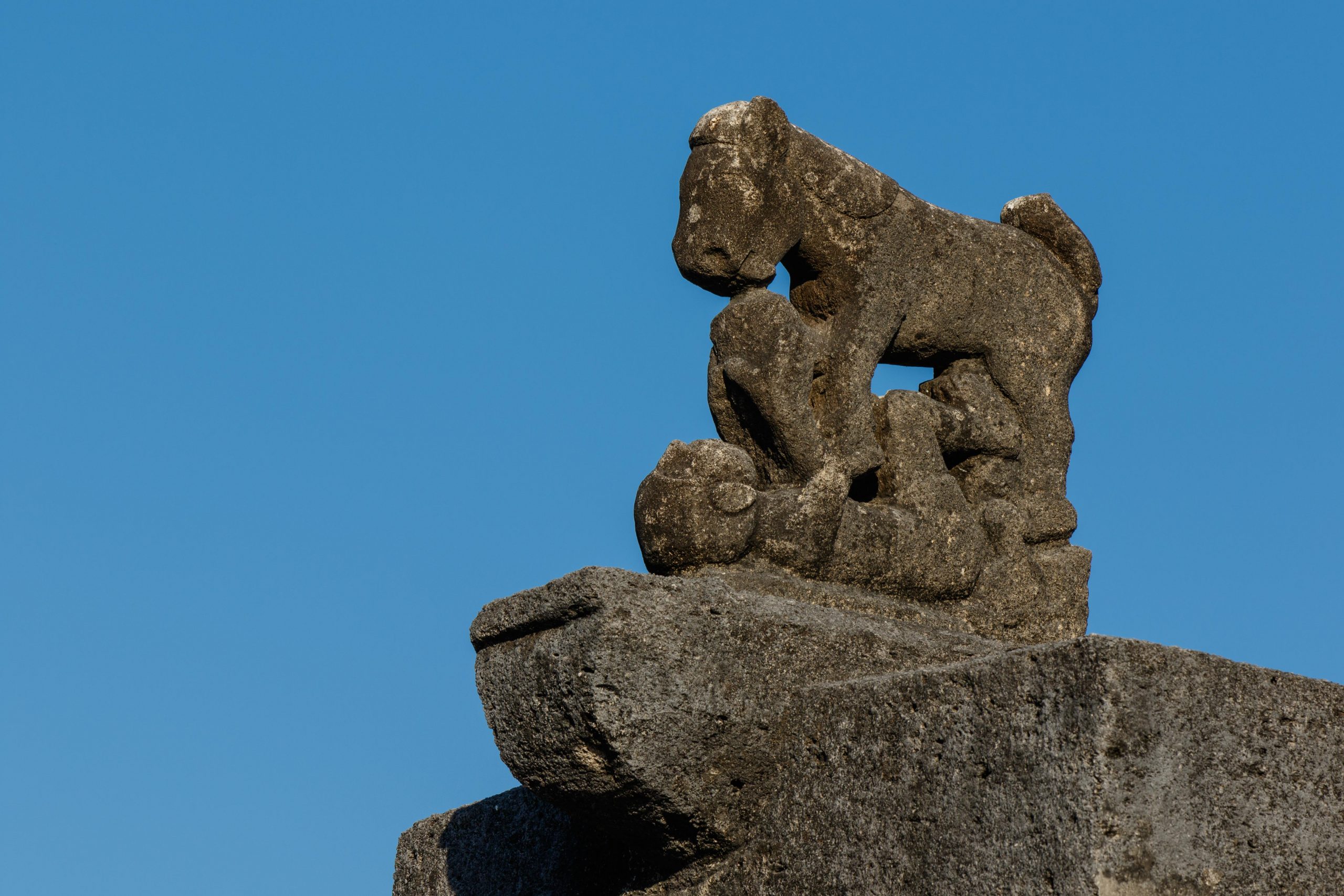
There are many different explanations about the origin of the name Marapu. The most likely is the composition of the words Mar and Apu, which means grandfather as creator and source of life. Marapu is a collective term for all spiritual forces, like gods, spirits and ancestors. The most important lesson of Marapu is the belief in the limited life in our world and eternal life after death. Death means that someone goes into the world of spirits, the “heaven of Marapu” – Praing Marapu. Spirits of the ancestors are still alive and watch over the living. Rituals and ceremonies are to keep and maintain a peaceful connection to the Marapu. As far as the ceremony complies with the rules, the Marapu bring blessings such as good relations with neighbours and family, good health, good harvest, etc.
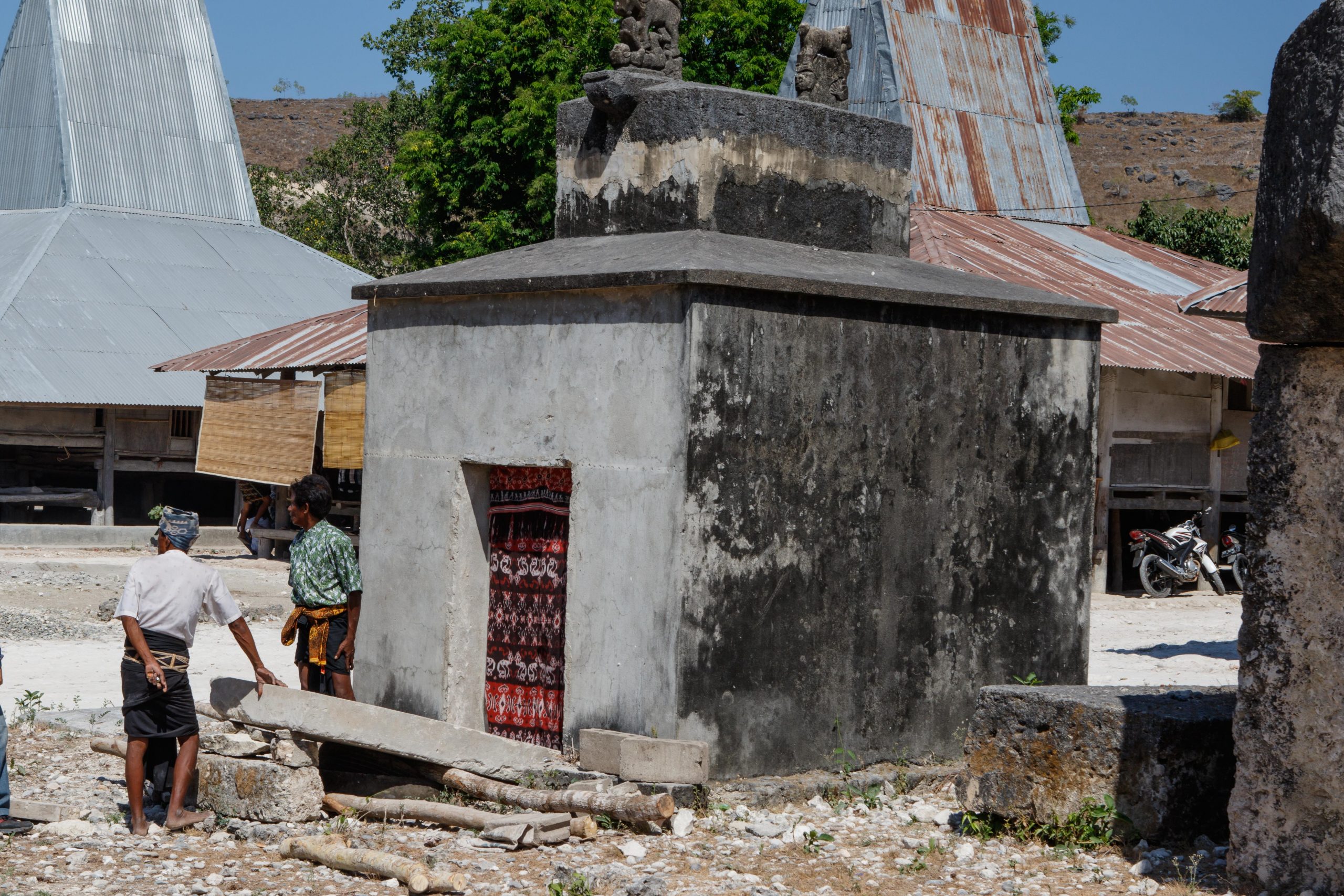
Family and neighbouring clans come from far away to attend the funeral and mourn the dead one more time.
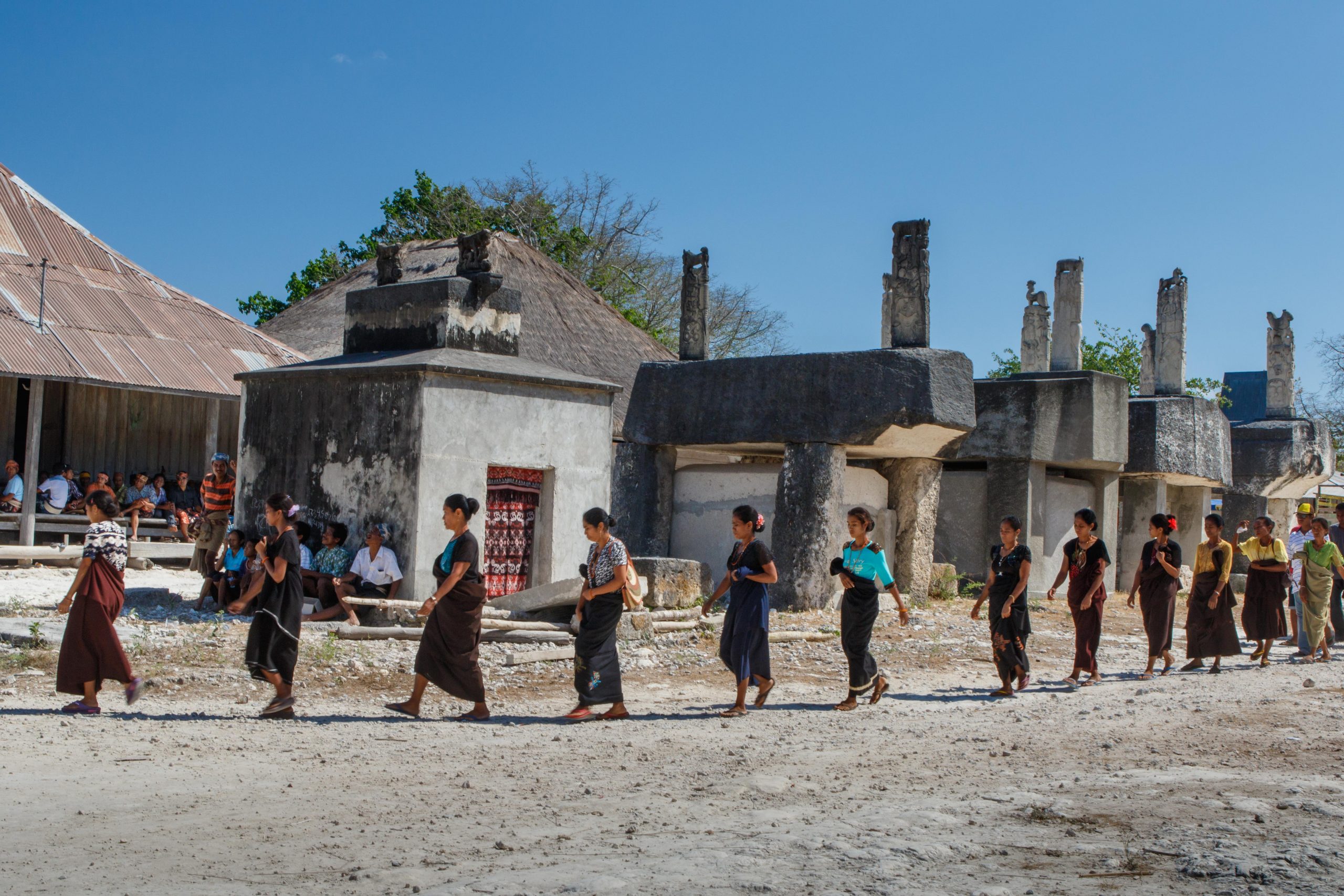
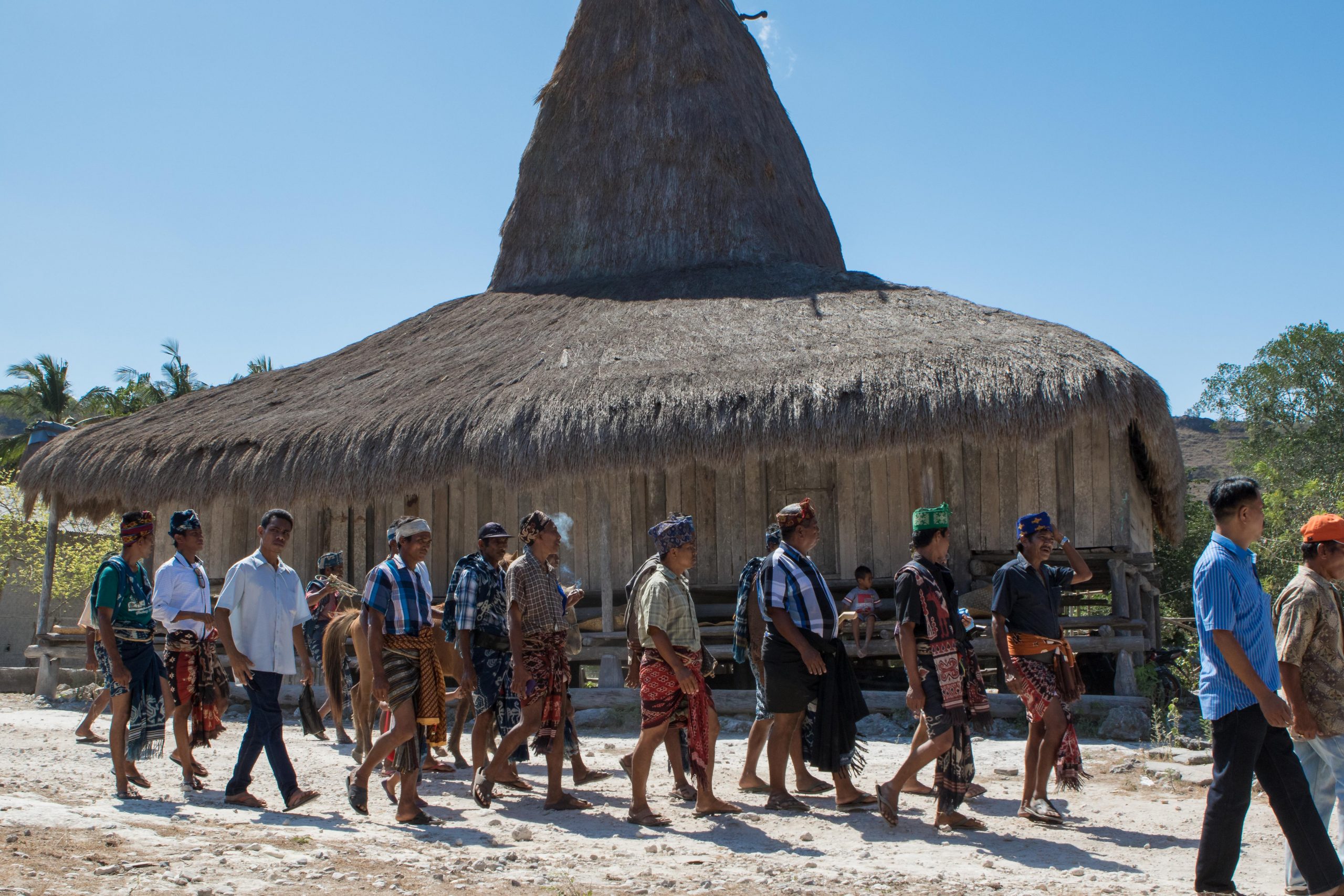
Offerings include animal sacrifices such as chickens, pigs and water buffalo, but the ultimate sacrifice is that of a horse. Shed blood of sacrificial animals symbolizes life, reconciliation with the Marapu, and good harvest. Any type of blood that flows into the earth makes the earth fertile. Exceptions are dogs. They are no sacrificial animals, but used in daily life as an edible gift.
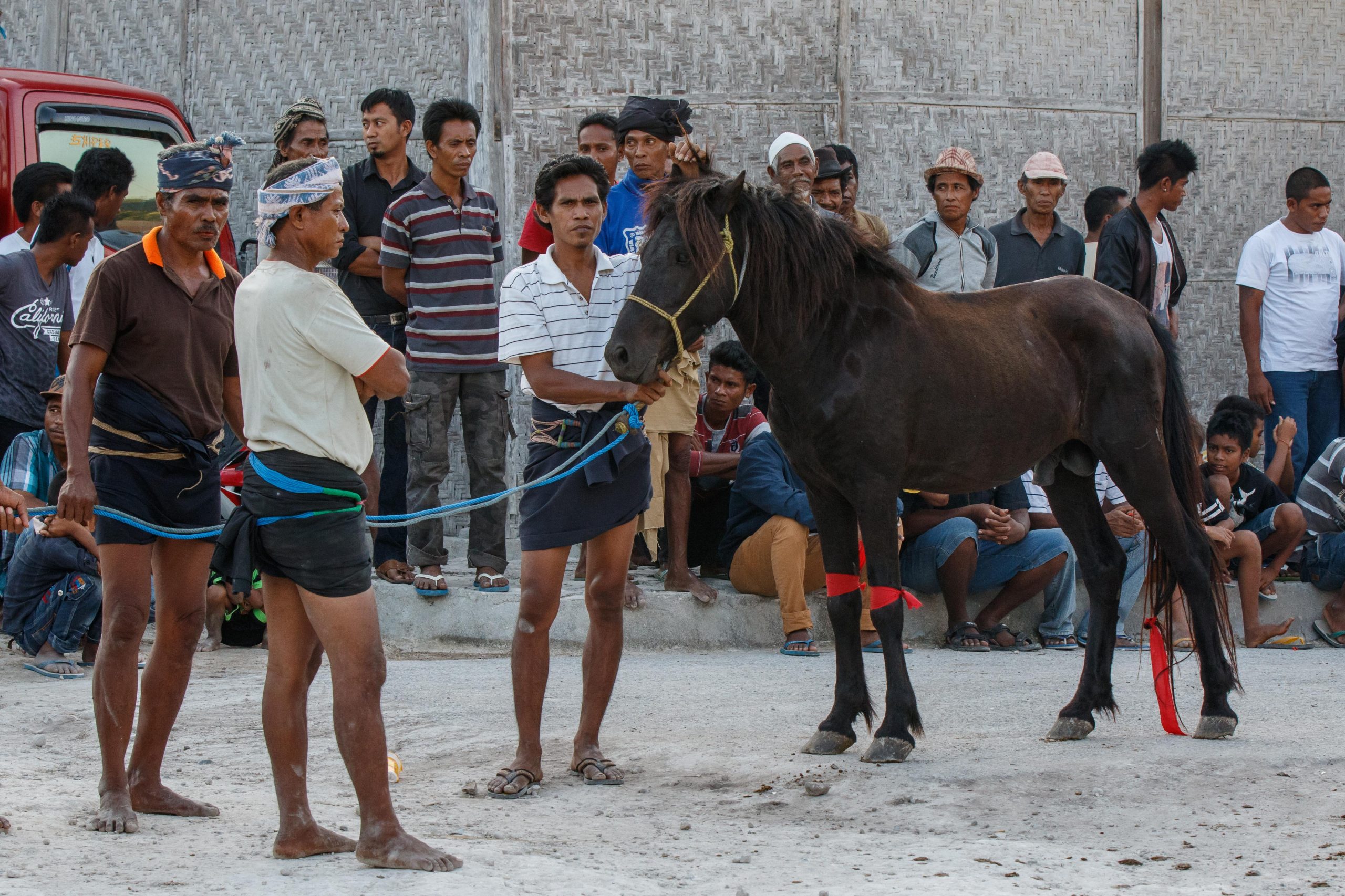
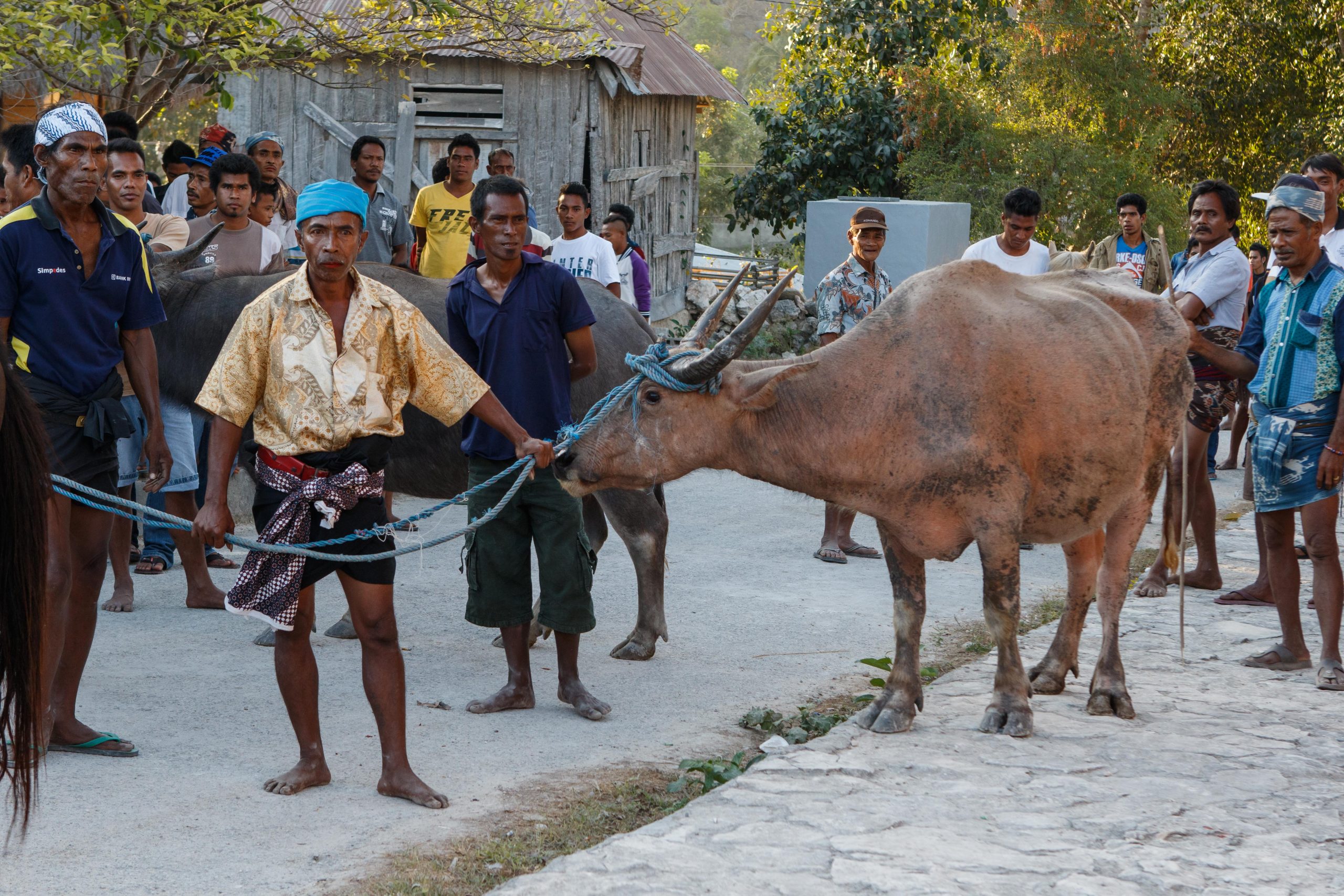
One after the other neighbouring clan pays their last respect to the deceased.
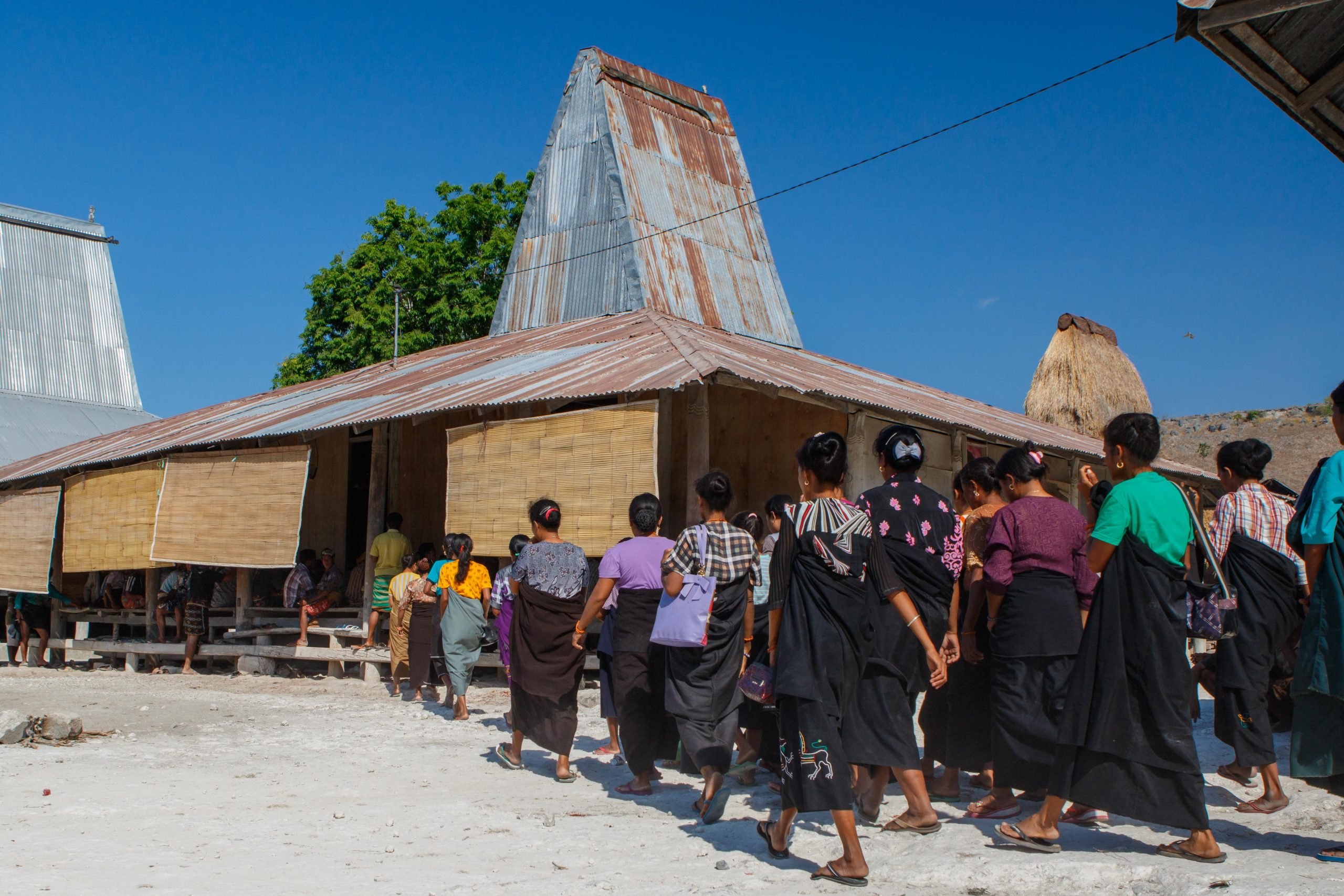
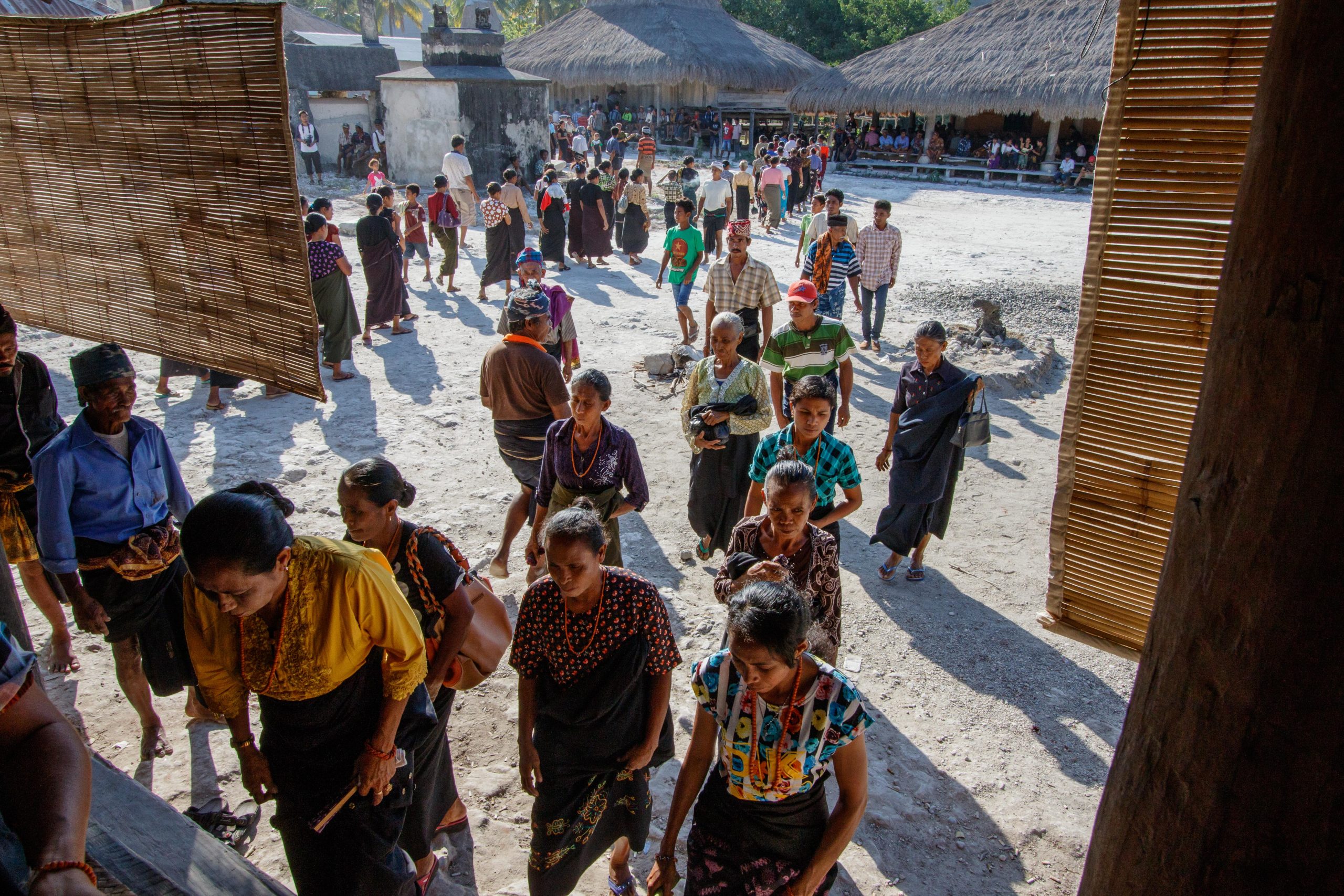
In east Sumba the body of the deceased is bent like a baby in the womb. This position is a symbol of rebirth in the world of spirits. The open coffin of the dead person is covered with a shroud of Ikat.
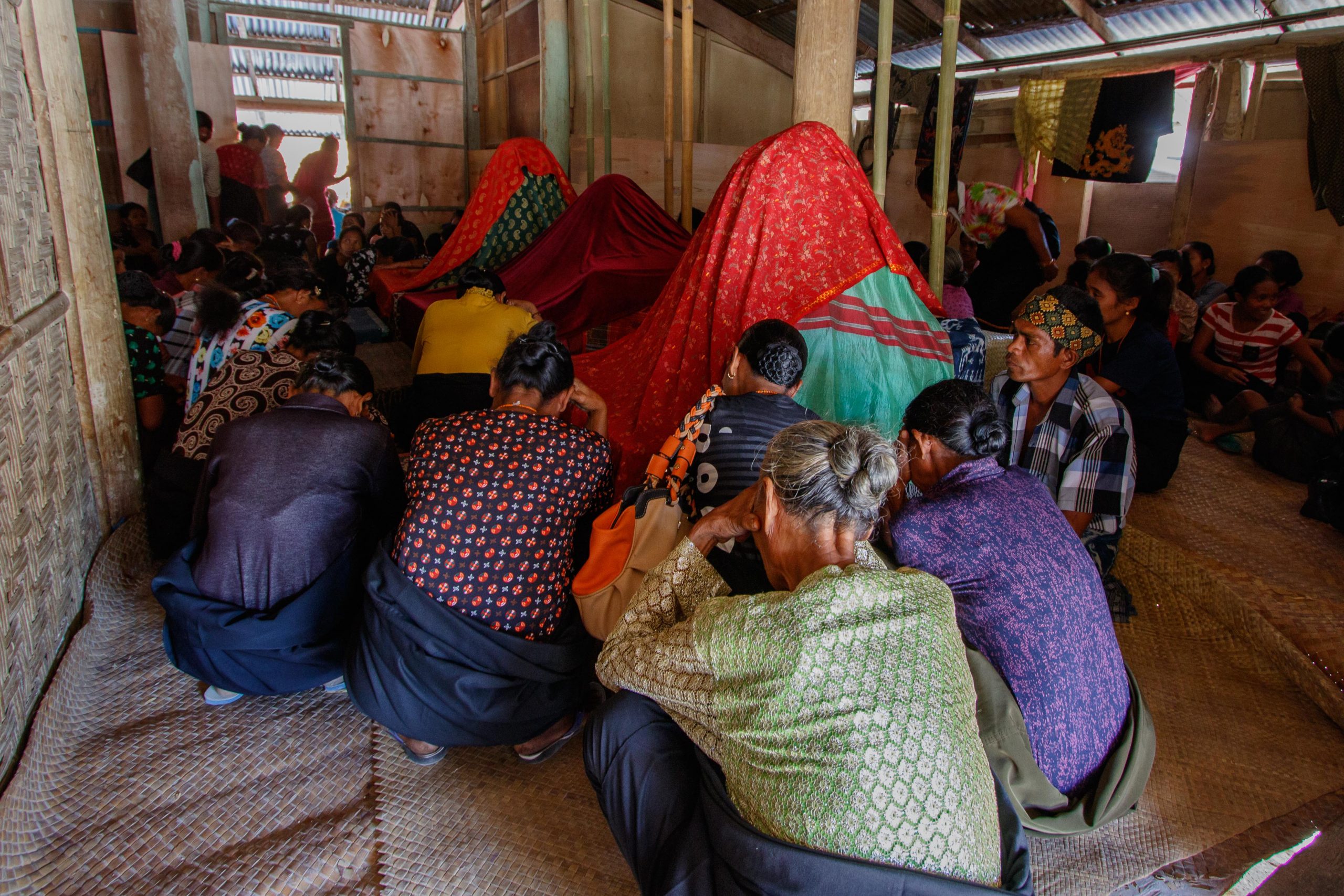
Outside the house where the deceased are kept the crowd is preparing to sacrifice a horse and a water buffalo.
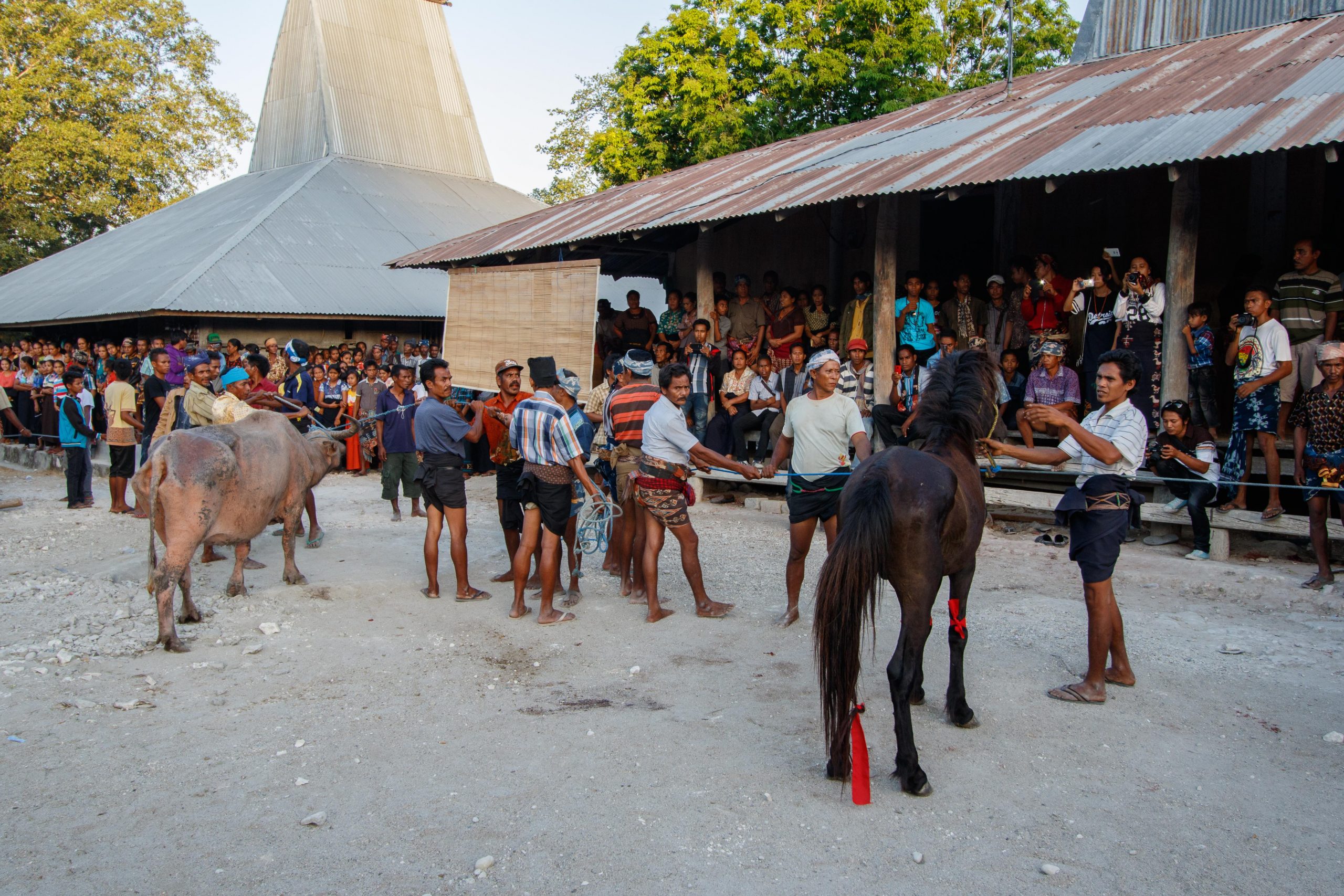
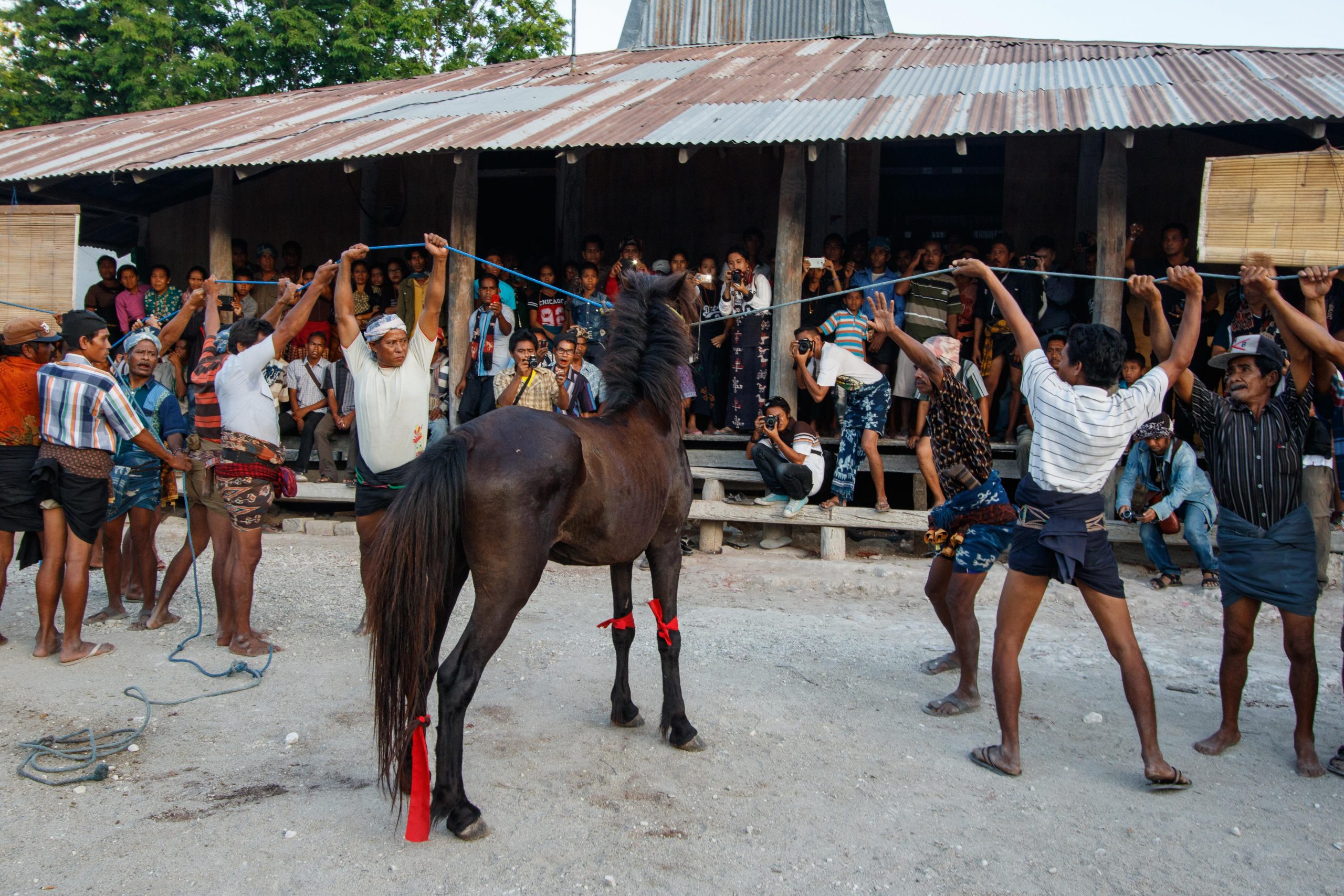
In Indonesia I have seen dozens of water buffaloes, goats, pigs and even dogs been sacrificed, but this horse was a first for me…
WARNING:
When you click and slide to the right you will see some (increasingly) graphic photos of the sacrifice of the horse. You may want to skip this…
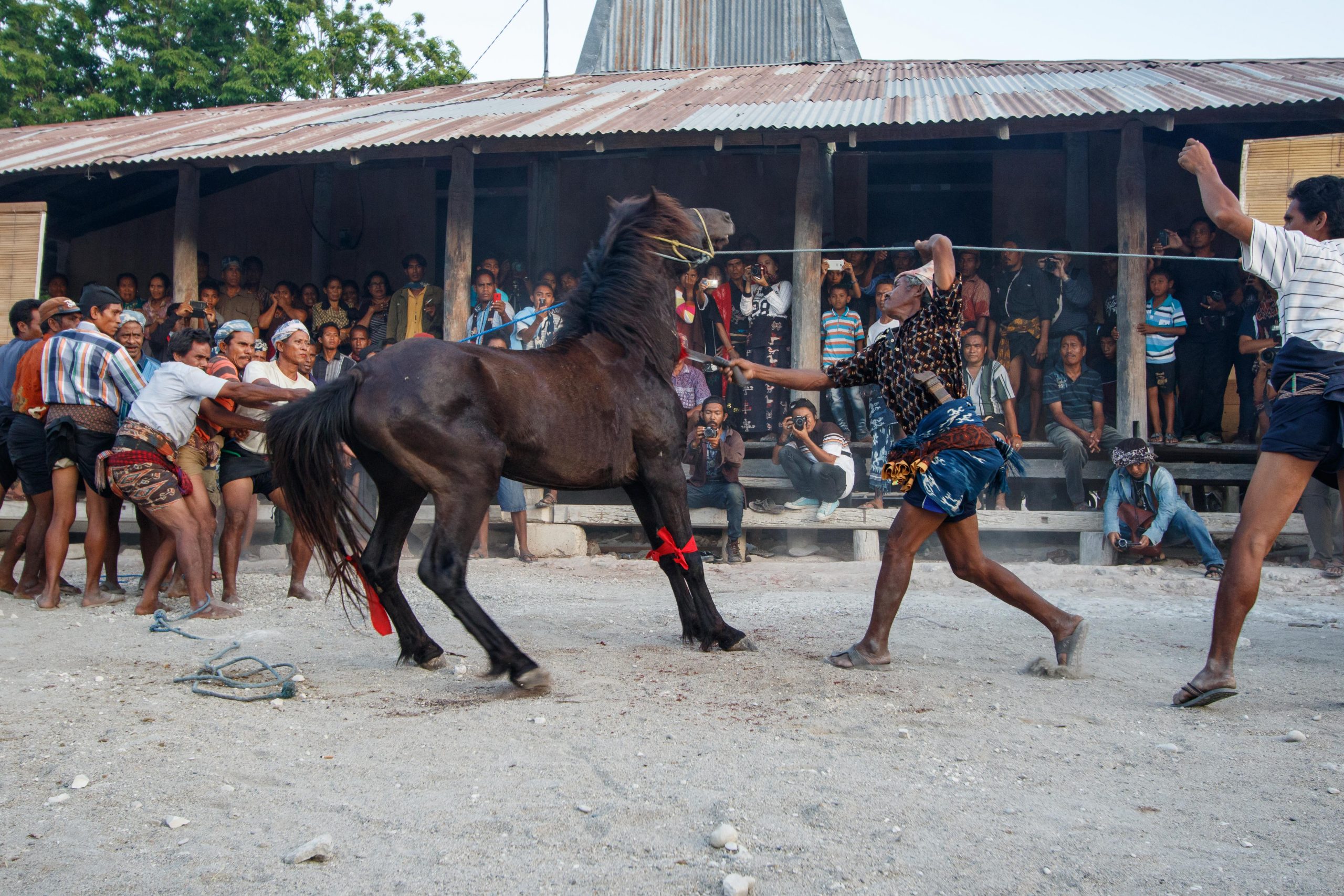
The heart and some other parts of the sacrificed animals are used to prepare a soup, which is then used as medium by the Rato, the spiritual leader of the community. From the heart and liver he can read the fate of the people, the success of the harvest, important events, etc. and allow him a glimpse into the future or reason why things happened. Such predictions are an essential part of all Marapu ceremonies.
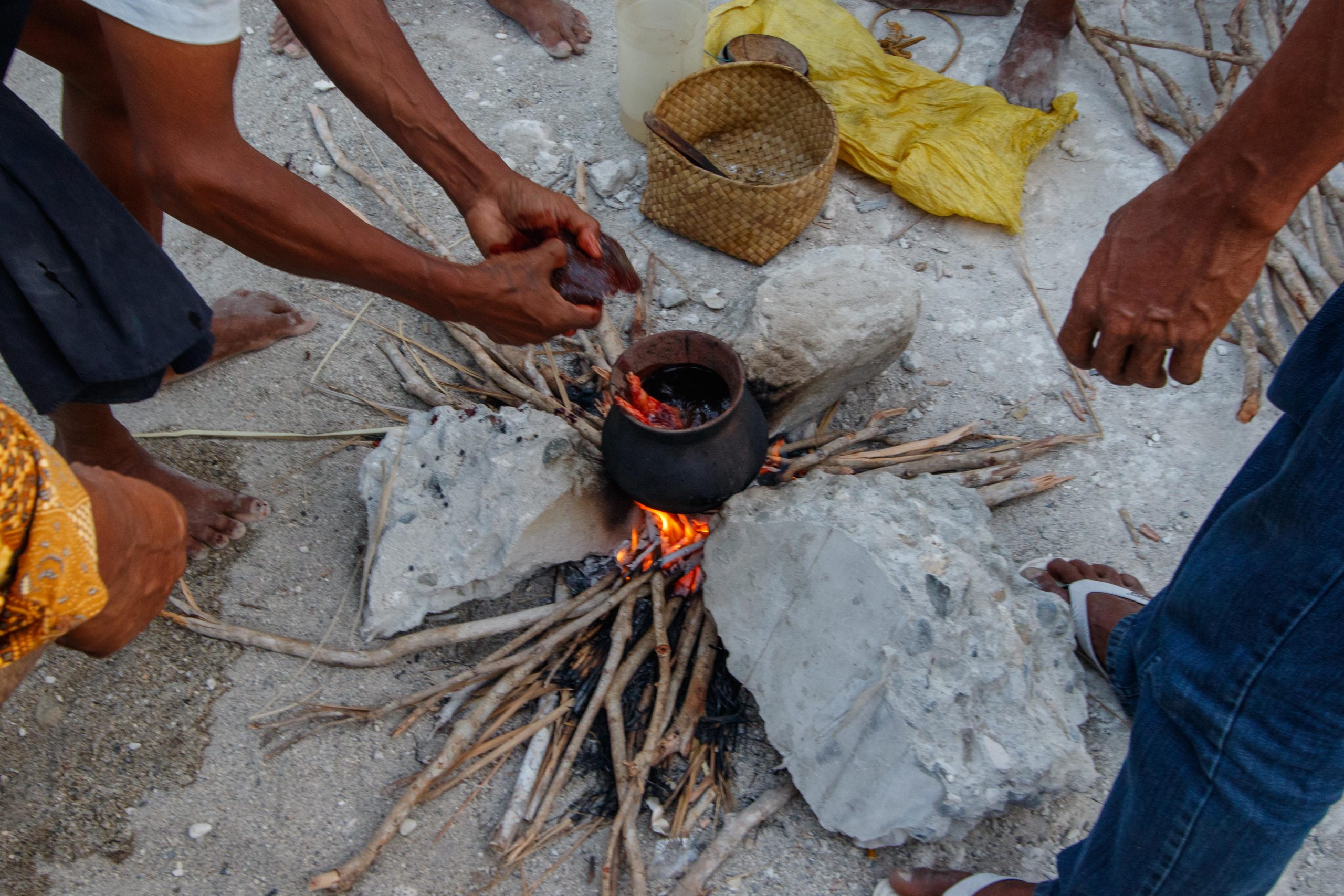
The funeral celebration symbolizes the transition of the deceased person into the ”Marapu heaven” – Praing Marapu.
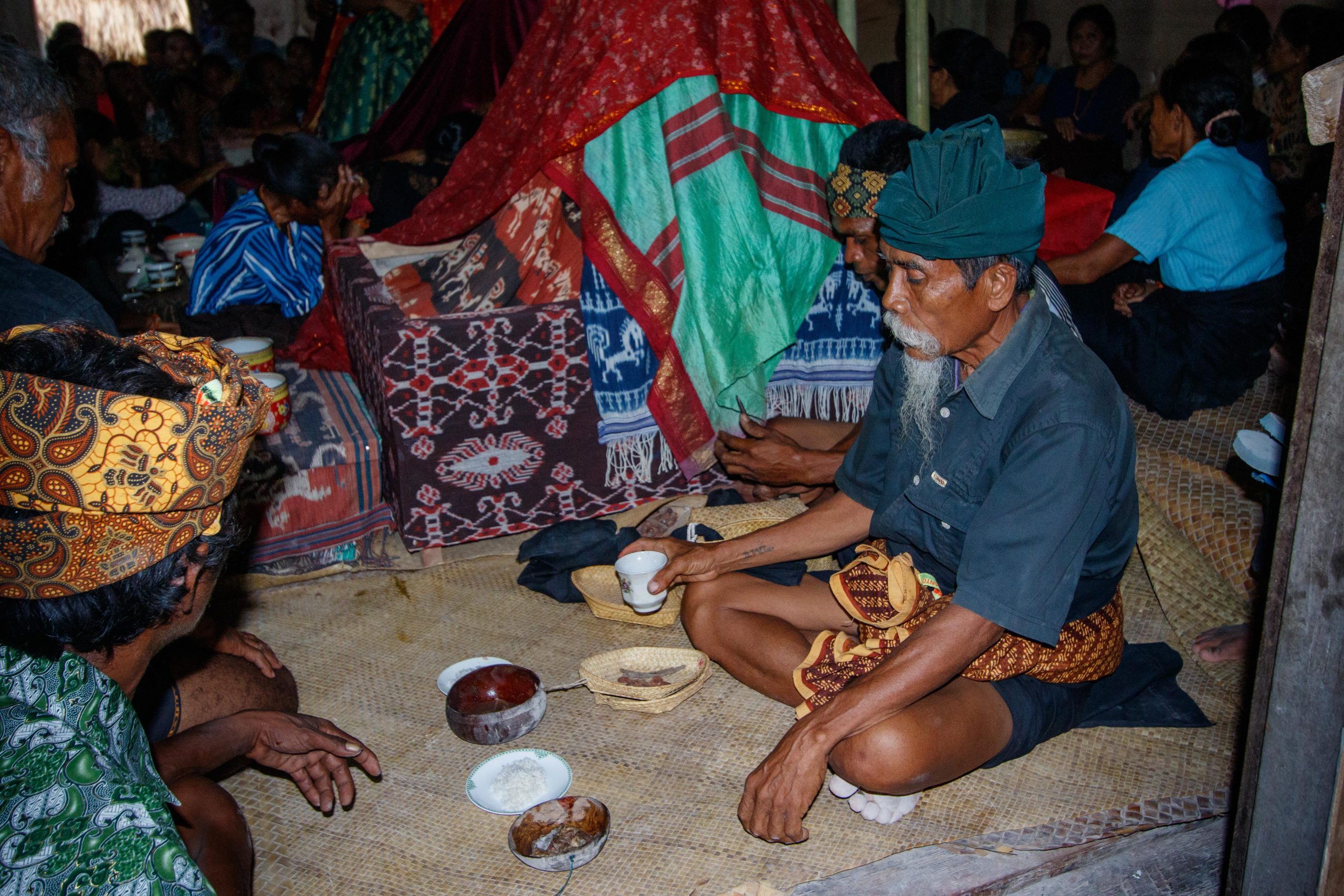
After the Rato has performed the last rites the bodies are carried to their last resting place, a megalithic tomb.
